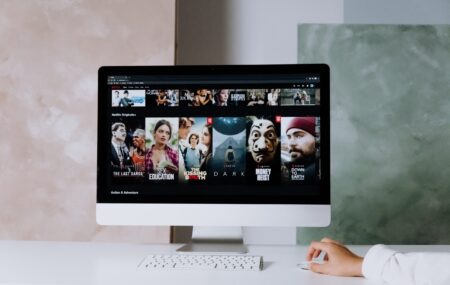Netflix and Disney+ are set to launch ad-funded options to reduce the cost of subscription in a battle to turn around the recent decline in growth. Amazon Prime are also currently recruiting heavily for their Streaming Advertising team, which is an indication of things to come.
The reported decline in paying subscribers could have been good news for the broadcasters, who had been struggling for impacts against the paid streaming services. It certainly wasn’t good news for Netflix as their share price dropped from $348 to $226 overnight.
The reaction to the drop in subscribers, was to announce the launch of ad-funding to lower (or potentially replace) the monthly subscription, and give the markets confidence that there were alternative revenue streams available to secure long term profitability.
This is great news for advertisers as the move will open up more commercially available impacts in a market which has been battling hard, particularly for younger viewers.
Calls for the BBC to change its financing mechanism
There is another way to dramatically increase the number of commercially available impacts though, that I flagged 20 years ago in my letter to the economist, published on 15th September 2001.
On 11th September 2001 the world changed, and I was trying at that very time to get the broadcast environment in the UK to enter the 21st Century:

In the 20 years that have passed since then, BBC income has risen to £5.06 billion, with 74% of that coming from the licence fee.
The calls for the BBC to change its financing mechanism have now become louder and louder but in the time since then, the TV ecosystem has changed dramatically.
We have seen the emergence of hugely popular streaming services which are funded by subscription rather than by advertising, thereby depriving marketers of potential advertising audiences. However, I have been confident that commercial pressures would force those players to reconsider their financial models and this week we have heard that both Disney and Netflix are considering an advertising-funded model.
Over the intervening 20 or so years, the funding for the BBC has only changed to bring more people into the broadcast tax bracket, with the removal of the exemption for the over 75’s. But the United Kingdom is no longer a broadcast island, with Sky now owned by Comcast and the likes of Netflix and Amazon able to use technology to enter the market at scale.
After years of tax-funded television share-of-viewing declining, resulting in lower advertising prices from increased commercial viewing, the introduction of streaming services had started to move the pendulum the other way.

If Netflix and Disney are now likely to have advertising-funded television, the supply of commercial impacts starts to move again in favour of advertisers, both in terms of pricing and access to audiences. As an agency whose clients have a highly elastic demand for TV, that their spend goes up by greater percentage than the fall and TV pricing, we wholeheartedly welcome this news.
Andy Sloan
CEO
 3 min read
3 min read 21 April, 2022
21 April, 2022 by
by 

















